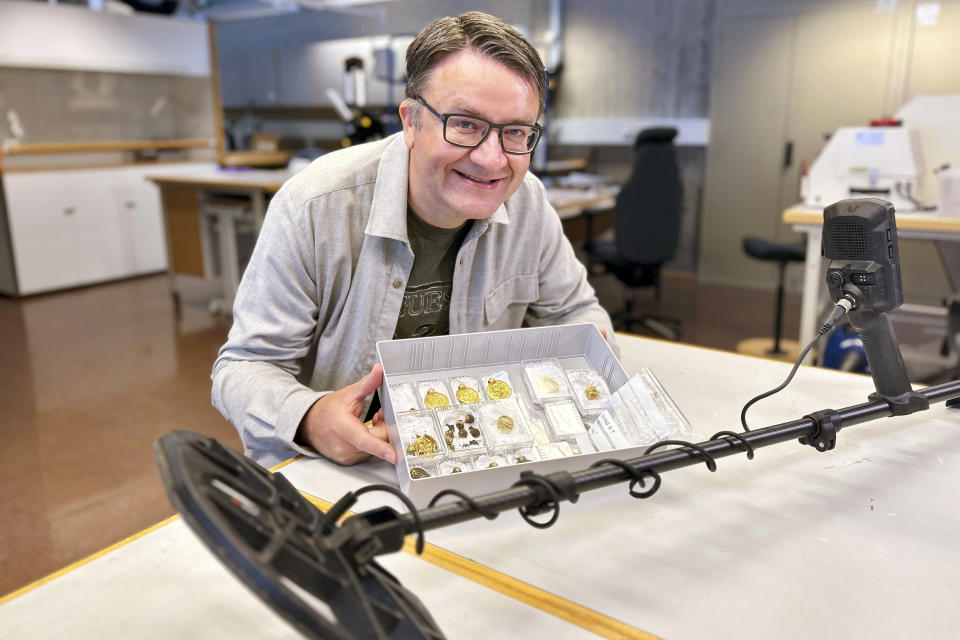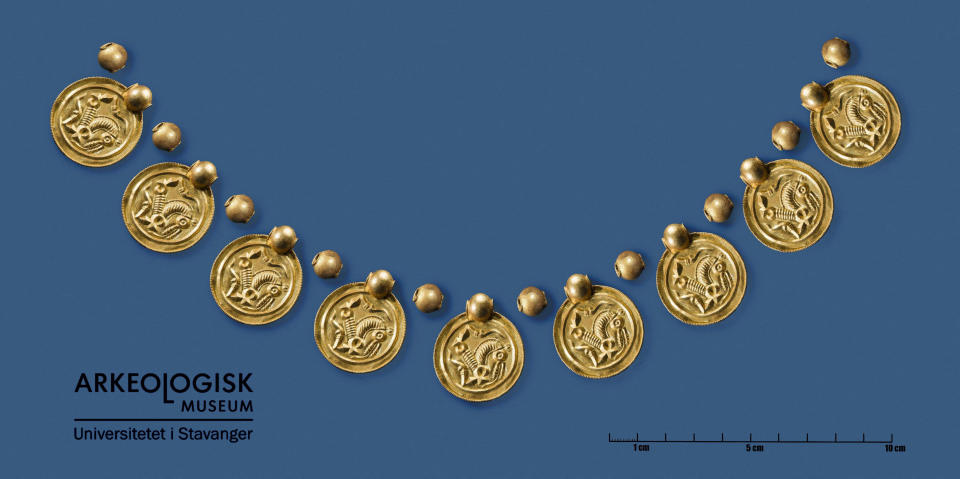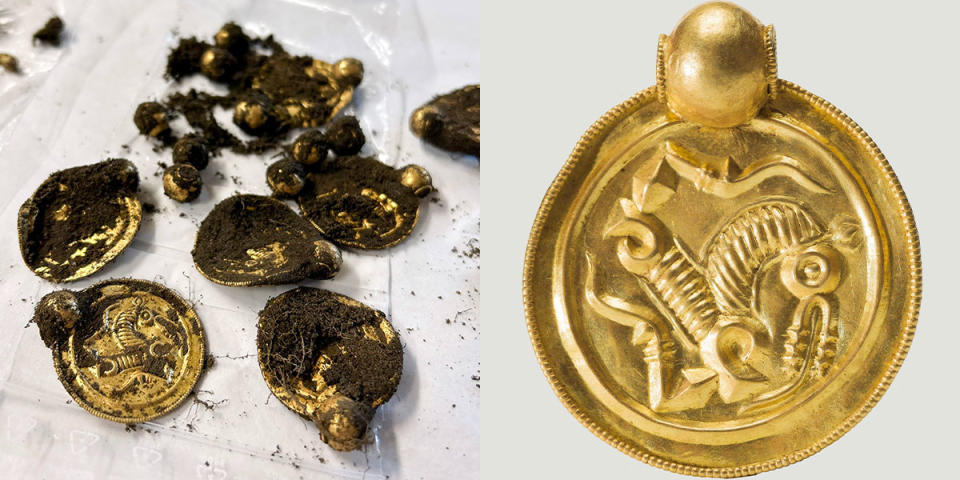Man buys a metal detector for fun and makes the ‘gold find of the century’ in Norway
A Norwegian man had barely unwrapped his new metal detector when he discovered what experts have described as the “gold find of the century.”
Erlend Bore, 51, told NBC News by telephone Thursday that he took up the hobby after his doctor advised him to get some exercise.
But he stumbled across the unique treasure trove which is more than 1,500 years old when he was using his new gadget on Rennesoey, a picturesque island to the north of the Norwegian city of Stavanger.
Bore, who lives in Sola, a small seaside resort near Stavanger, said that hours of detecting only yielded “trash like aluminum foil and a very small fem ore,” a more modern coin that is no longer in use.

On the verge of going home, he said he tried a nearby hill and it took seconds for him to get a hit.
Initially, Bore said, he thought he'd found toy gold coins or chocolate money. But experts at the university's archaeological museum later determined he had come across nine gold pendants, three gold rings and 10 gold pearls that someone might have worn as showy jewelry centuries ago, all lying barely 5 inches below the ground.

Not seen since before the Viking Age, the pendants were bracteates: thin, flat, single-sided gold discs that once formed an amulet.
The find weighs just 3.5 oz but has huge historical significance for the understanding of the period. There has been no similar find in Norway since the 19th century.
“There was a terrible period in the middle of the 6th century when both plague and climate deterioration came at once,” Håkon Reiersen, associate professor at the museum, told the Norwegian broadcaster NRK. He added that at the time, the region of Rogaland “had a large population, and many died.”
“From that period immediately after, we have almost no finds,” he said.
“So many people died, and some had to put down their most precious things in hopes of either getting better times or to hide their treasures,” he added.
Buried around 500 A.D. when Norway was ruled by rival kings and the Roman Empire had not long collapsed, the museum’s experts believe the intricate craftmanship shown in the gold suggests the jewelry was made in a nearby workshop controlled by political and religious elites that may have held sway over much of southern Norway.

The motifs on the jewelry are unusual and have excited archaeologists. The 1,000 bracteates found in Scandinavia typically show the Norse god Odin healing the sick horse of his son, Balder — but the new pieces show just a horse, an image with important cultural symbolism in pre-Christian Norway.
“On these gold pendants the horse’s tongue hangs out, and its slumped posture and twisted legs show that it is injured,” Sigmund Oehrl, an archaeologist at the museum, said in a press release.
"Like the Christian symbol of the cross, which spread in the Roman Empire at exactly this time, the horse symbol represented illness and distress, but at the same time hope for healing and new life," he said.
The museum plans to put the items on public display.
“I didn’t sleep much for several nights after the find, I was so high on adrenaline,” Bore said, adding that his more recent searches had yielded more normal results.
On a recent search he said he found “a sheep’s ear tag and the lid of a teapot.”
Under Norwegian law, Bore could be entitled to a finder's fee of the gold's minimum value plus 10%, which he would have to share equally with the landowner. But Bore said this has yet to be decided.
The plan is to exhibit the find at the Archaeological Museum in Stavanger, about 200 miles southwest of Norway's capital, Oslo.
This article was originally published on NBCNews.com

